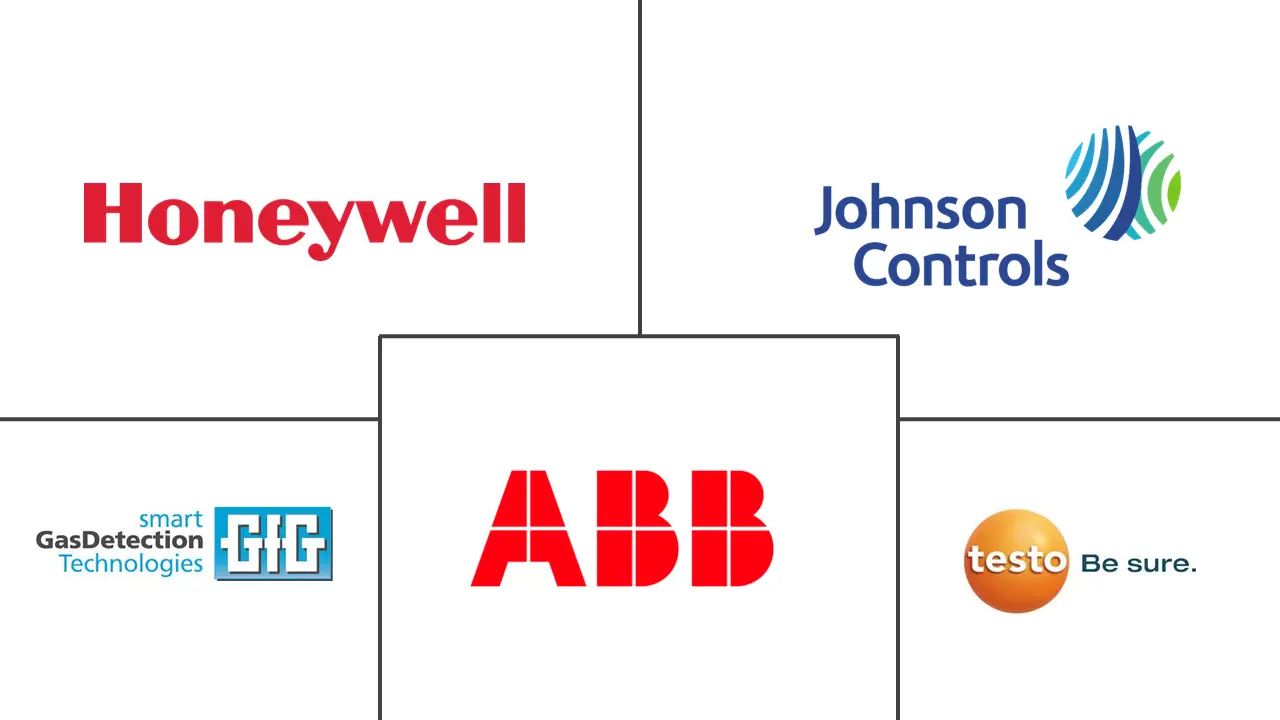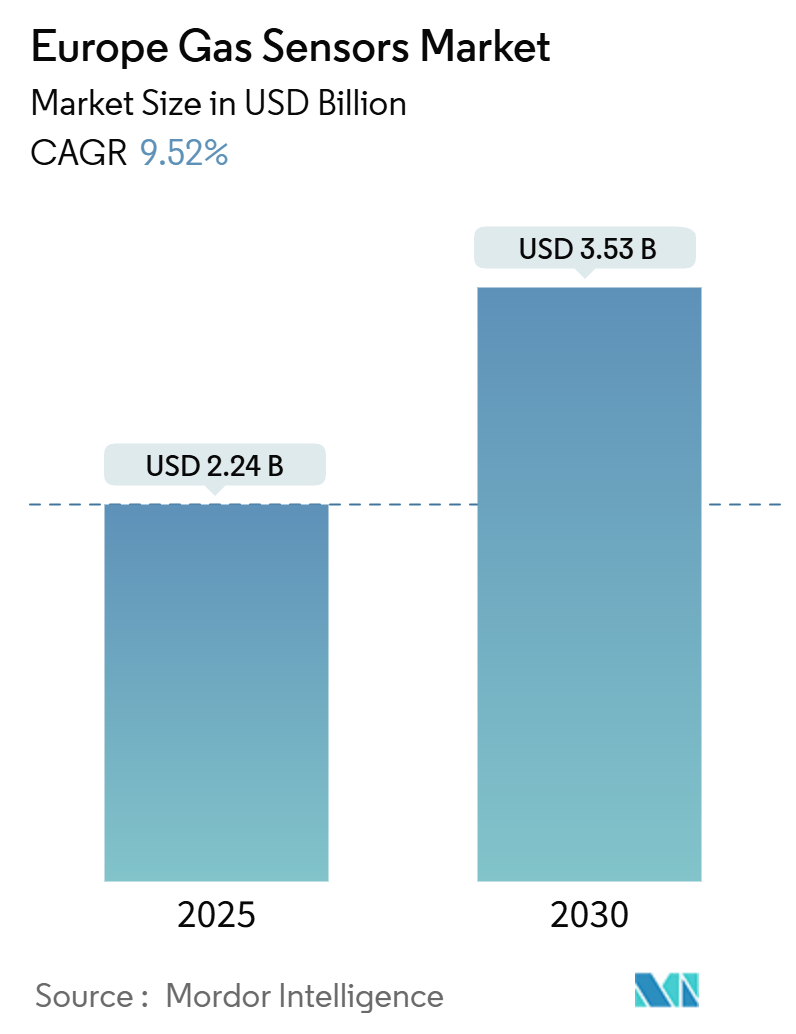
Europe Gas Sensors Market Analysis
The Europe Gas Sensors Market size is estimated at USD 2.24 billion in 2025, and is expected to reach USD 3.53 billion by 2030, at a CAGR of 9.52% during the forecast period (2025-2030).
- Governments' increasing attention on emission control and energy efficiency regulations has led to gas sensors in European nations such as Germany, France, and the United Kingdom. The variables that would drive market expansion in this area include an expanding end-user base and expanding avenues for the usage of gas sensors.
- The European gas sensor market is projected to continue to be dominated by automotive and transportation applications. In Europe, strict environmental and safety requirements require all vehicle and transportation OEMs to include gas sensor technologies in their offerings.
- Additionally, the IIoT is also advancing in the region. Customers are becoming more interested in IoT gas detectors, and players in the industry are working on establishing a product range tailored to IoT solutions. The necessity for wireless detectors owing to the requirement of continuous and real-time monitoring and detection of emissions is predicted to drive up demand for gas detectors in recent years and the coming years.
- Carbon dioxide sensors are primarily used in households, schools, offices, and hospitals to monitor indoor air quality. Similarly, these sensors are also utilized for real-time monitoring of agricultural goods' freshness, quality, and safety. Therefore, as excessive carbon dioxide exposure can cause health problems such as headaches and restlessness, the need for carbon dioxide sensors is rapidly increasing in this region.
- However, the high initial cost of the sensors acts as a significant barrier to adoption, stifling market growth. Also, the costs of production for gas sensors and detectors have been steadily rising due to recent technological changes. While the market incumbents have been able to adapt to these changes, new entrants and mid-range manufacturers face considerable challenges.
- Due to COVID-19, the demand for oxygen concentrators and medical ventilators has been rising quickly. As a result, oxygen and flow sensors for medical equipment have become a crucial component of how medical concentrators and ventilators operate.
Europe Gas Sensors Market Trends
Automotive Application to Grow at a Fast Rate
- As per the European Commission, passenger cars and vans ('light commercial vehicles') are responsible for around 12% and 2.5%, respectively, of total EU emissions of carbon dioxide (CO2), which is the main greenhouse gas. The popularity of gas sensors in the automobile sector is increasing as government pollution rules become more rigorous.
- In 2023, Germany produced the most passenger cars in Europe. Its production amounted to some 4.11 million passenger cars that year. Spain ranked second with almost 1.91 million passenger cars produced. Such countries caters to the major demand for the market.
- The entrance of pollutant gases through ventilation systems, pollutants entering through window apertures, a lack of fresh air intake resulting in low oxygen (02) concentrations, and toxic gases entering via redirected exhaust fumes all have a significant impact on the air quality in the car cabin. As a result, strict environmental and safety laws oblige all vehicle and transportation OEMs to offer gas sensor systems.
- Additionally, the usage of gas sensor and detector components per car is being enhanced by the migration of safety and comfort features from high-end sector vehicles to mid-range vehicles, owing to the rise of complex safety features and advanced driver assistance systems (ADAS).
- Improvements in the efficiency of combustion in a vehicle can result in reductions in the emission of harmful pollutants and increase fuel efficiency. Gas sensors have an important role to play in this process, since they can provide real-time feedback to the vehicular fuel and emissions management systems as well as reduce the discrepancy between emissions witnessed in factory tests and ‘real world’ scenarios.
- Leading automotive sensor companies like Bosch, Denso, and Infineon Technologies are making signficant investments into more technologically sophisticated, safer, and secure gas sensor-based products for a variety of applications.
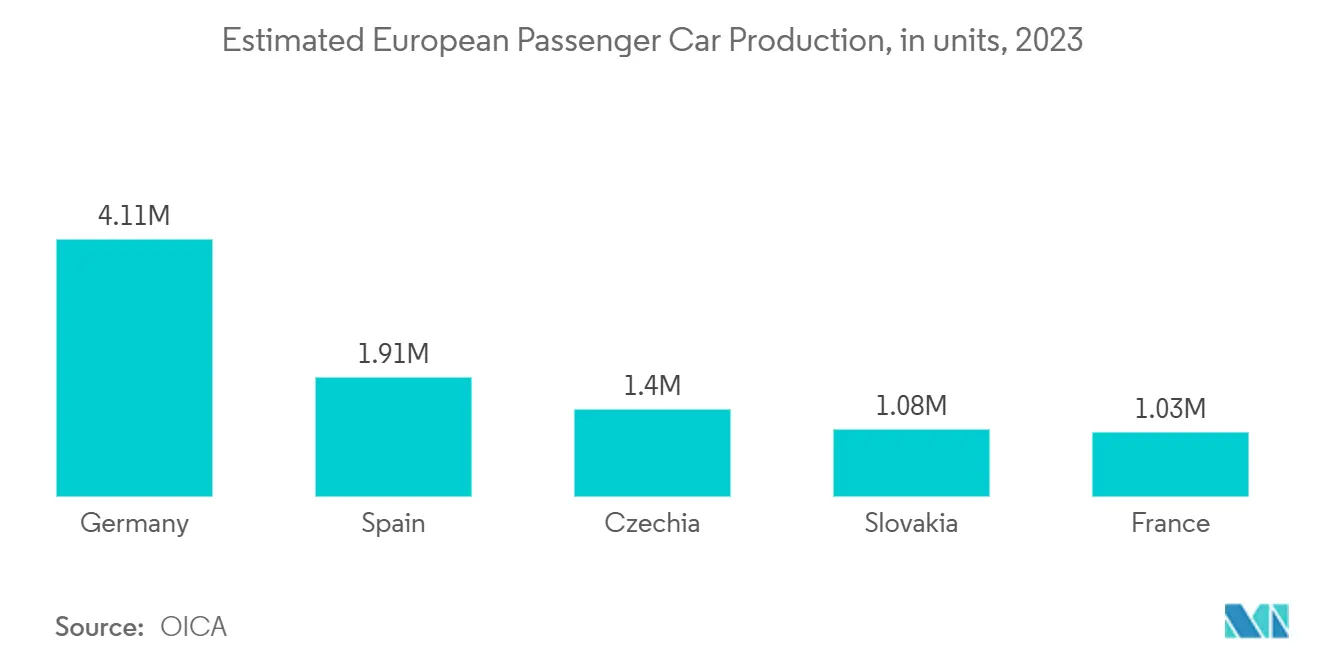
United Kingdom to Occupy a Significant Share
- The UK Gas Analysis and Sensing Group (GASG) has been pivotal in promoting advancements in gas sensing technology since its establishment. It serves as a forum for professionals across academia, industry, and government to discuss innovations and share knowledge related to gas detection.
- Gas detection is heavily regulated in the UK, primarily governed by the Health and Safety Executive (HSE). The guidelines include compliance with workplace exposure limits (WELs) for various gases such as carbon monoxide (20 PPM over an 8-hour TWA) and hydrogen sulfide (5 PPM over an 8-hour TWA).
- Owing to the presence of many toxic and combustible gases, there is a growing focus on explosion prevention within hazardous locations in manufacturing and chemical industries. The monitoring of these hazardous areas can help achieve safer working environments. Moreover, many government and industry regulations necessitate workers to be limited to the exposure of toxic gases and fumes. Consequently, there is an increase in the use of electrochemical gas sensors, which provide improved sensitivity and selectivity for a broad range of toxic gases.
- Electrochemical sensors can measure oxygen levels down to the parts-per-million (ppm) level, which makes them a vital sensing technology for many different industries. Moreover, these sensors can be constructed differently depending on the application and, thus, provide tailored solutions to new emerging applications.
- However, most electrochemical sensors demonstrate some degree of cross-sensitivity, which refers to the response of the sensor to gases other than the target gas, generally as a result of greater chemical reactivity in the non-target gas than the target gas. As such, it is important to employ the use of filters and bias voltage during operations for minimizing the effect of cross-sensitivity on the accuracy of readings.
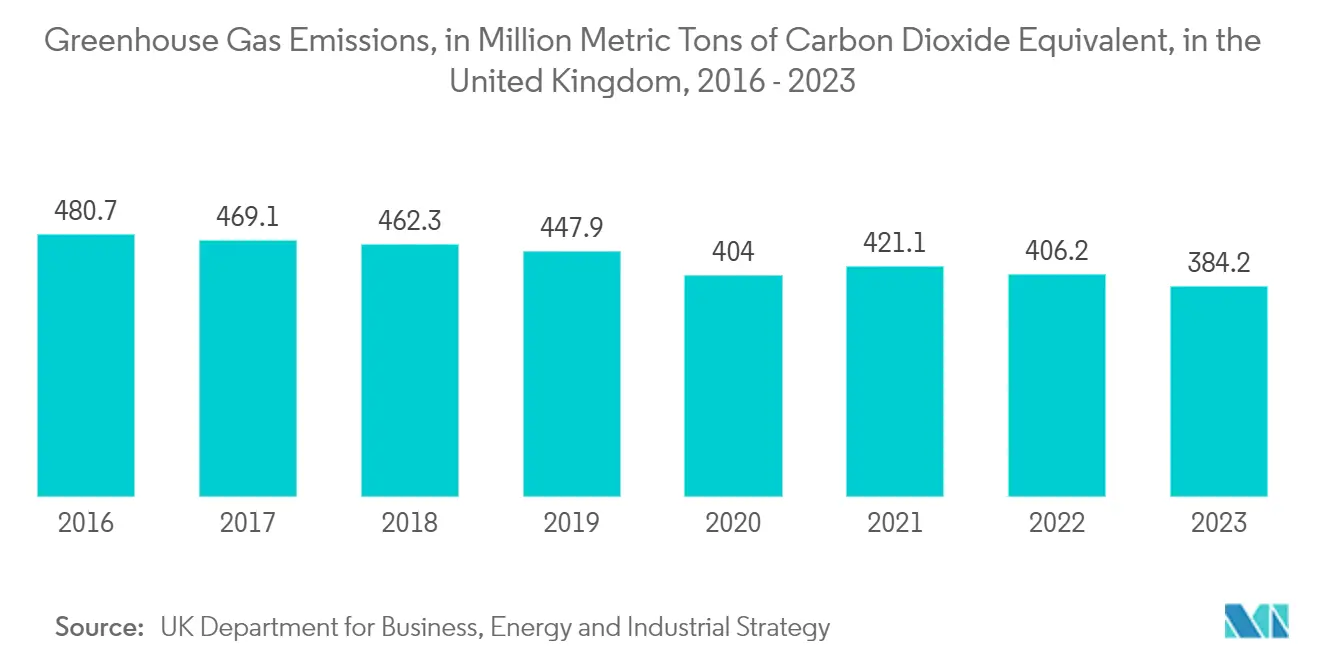
Europe Gas Sensors Industry Overview
Europe Gas Sensors Market is moderately competitive. Players are leveraging strategic acquisitions as well as partnerships to expand their market presence. Some of the major players in the market are GFG Europe, Testo SE & Co. KGaA, Honeywell International, Ltd., Draegerwerk AG & Co. KGaA, and others.
The European market is characterized by stringent regulations regarding emissions and workplace safety. Compliance with these regulations is essential for manufacturers and users of gas sensors. Recent innovations focus on improving sensor accuracy and reducing costs while ensuring compliance with environmental regulations like RoHS and REACH. In conclusion, the European gas sensor market is poised for robust growth driven by technological advancements and increasing safety regulations across multiple sectors.
Europe Gas Sensors Market Leaders
-
Honeywell International, Ltd.
-
Johnson Controls Corporation
-
Testo SE & Co. KGaA
-
ABB Ltd.
-
GFG Europe
- *Disclaimer: Major Players sorted in no particular order
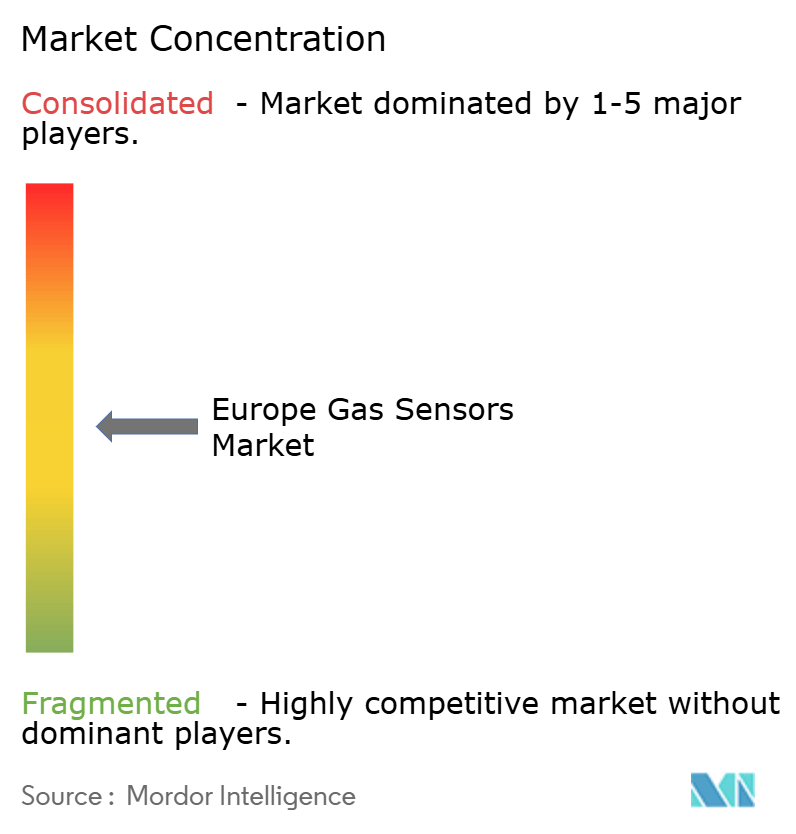
Europe Gas Sensors Market News
- June 2024: Methane detection, remediation, and reporting operating system atmio, the operating system for effortlessly finding, fixing, and reporting methane emissions today announces that it has raised EUR 5.1 million (USD 5.31 million) in a Seed round, bringing the company's funding to over EUR 6.4 million (USD 6.66 million).
- March 2024: Dryad Networks "Internet of the Forest" secures EUR 5.6 million (USD 5.83 million) for its advanced wildfire detection. Dryad Networks' proprietary solution combines solar-powered infrastructure with state-of-the-art AI-enabled gas sensors strategically placed in forested areas.
Europe Gas Sensors Industry Segmentation
A gas sensor is a variant of a chemical sensor that can measure the concentration of a constituent gas in its vicinity. These sensors adopt different techniques for quantifying the exact amount of gas in a medium.
Europe Gas Sensors Market is segmented by gas type (oxygen, carbon monoxide, carbon dioxide, nitrogen oxide, hydrocarbon), connectivity type (wired and wireless), technology (electrochemical, paramagnetic, zirconia, non-disruptive IR), application (oil and gas, chemicals and petrochemicals, water and wastewater, automotive, healthcare, power sector) and country (United Kingdom, Germany, France, Rest of Europe). The market sizes and forecasts are provided in terms of value (USD) for all the above segments.
| By Gas Type | Oxygen |
| Carbon Dioxide | |
| Carbon Monoxide | |
| Nitrogen Oxide | |
| Hydrocarbon | |
| Others | |
| By Connectivity Type | Wired |
| Wireless | |
| By Technology | Electrochemical |
| Paramagnetic | |
| Zirconia | |
| Non-disruptive IR | |
| By Application | Oil and Gas |
| Chemicals and Petrochemicals | |
| Water and Wastewater | |
| Automotive | |
| Healthcare | |
| Power Sector | |
| Others | |
| By Country | United Kingdom |
| Germany | |
| France | |
| Rest of Europe |
Europe Gas Sensors Market Research FAQs
How big is the Europe Gas Sensors Market?
The Europe Gas Sensors Market size is expected to reach USD 2.24 billion in 2025 and grow at a CAGR of 9.52% to reach USD 3.53 billion by 2030.
What is the current Europe Gas Sensors Market size?
In 2025, the Europe Gas Sensors Market size is expected to reach USD 2.24 billion.
Who are the key players in Europe Gas Sensors Market?
Honeywell International, Ltd., Johnson Controls Corporation, Testo SE & Co. KGaA, ABB Ltd. and GFG Europe are the major companies operating in the Europe Gas Sensors Market.
What years does this Europe Gas Sensors Market cover, and what was the market size in 2024?
In 2024, the Europe Gas Sensors Market size was estimated at USD 2.03 billion. The report covers the Europe Gas Sensors Market historical market size for years: 2019, 2020, 2021, 2022, 2023 and 2024. The report also forecasts the Europe Gas Sensors Market size for years: 2025, 2026, 2027, 2028, 2029 and 2030.
Our Best Selling Reports
Europe Gas Sensors Industry Report
Statistics for the 2025 Europe Gas Sensors market share, size and revenue growth rate, created by Mordor Intelligence™ Industry Reports. Europe Gas Sensors analysis includes a market forecast outlook for 2025 to 2030 and historical overview. Get a sample of this industry analysis as a free report PDF download.

